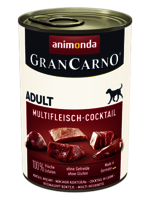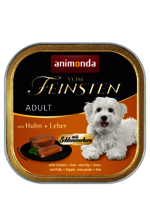Dogs in winter
To ensure that dogs get through the winter without any problems, there are several things to bear in mind regarding essential items and ideal care and nutrition.
When winter is approaching
At the latest when the clocks are put back in October, dogs are more frequently taken for their walks in the dark. Many dog owners are well prepared and get out their reflective leads and/or light-up collars. Buying one of these glow-in-the-dark items can be highly recommended to any dog owner. This is because they not only draw the attention of other people to your dog, but also give you the safe feeling of having your pet in sight at all times.
Helping your dog during moulting
As winter approaches, many dog owners have to deal with their pets moulting. Before the winter comes, dogs shed their summer coat and grow a thick new winter coat. For some dogs this is no problem at all, but for others it can be a real burden. Because depending on the age, breed and condition of the coat, the moulting process can be quite strenuous for the dog. Here, a high-quality food that provides the dog with all the essential nutrients is important, as is support from the dog owner. In particular dogs with a thick undercoat should now be combed and brushed daily to ensure that the moulting process takes place as quickly and smoothly as possible.
Well-prepared for the winter
Huskies, spitzes and Newfoundland dogs are well equipped against the cold and snow thanks to their coats. It is, however, different for Boxers, Dobermanns and greyhounds. Dogs with short fur and less undercoat will feel cold much more quickly, especially if they are small and therefore more susceptible to the cold. For these dogs, a dog coat or jacket is recommended in inclement and cold weather.
Paw care for dogs
The paws are the dog’s most important direct connection to its environment. A regular check of the paws should therefore be carried out in order to spot any injuries, especially in winter. Salt, ice and grit can be a constant burden and can visibly affect your dog’s pads. To protect them, special paw ointment for dogs is recommended, which provides a natural protective barrier. Vaseline and milking fat are only suitable to a certain extent.
If your dog has been walking in the snow, wash its paws briefly with lukewarm water to remove any road salt. Also check whether there are any pieces of ice between its pads. These can be carefully removed. If your dog’s paws are chapped, apply the cream again after the walk.
Dogs love snow
Some dogs do not enjoy the snow at all and dislike going for walks in it. Most, however, have a great time playing in the snow. This is easy to understand with young dogs, but even older dogs can be magically attracted to snow. They love to run across the snow-covered fields, poke their noses into holes in the snow and catch snowballs.
They should, however, avoid eating the snow. This could lead to stomach pain, diarrhoea or vomiting. Depending on the severity of the symptoms and the dog’s condition, you may need to consult a vet. If it is just a minor stomach upset, one day of fasting followed by a light diet will suffice.
Tips for outdoor activities
As soon as dogs feel the snow under their feet, they are usually so engrossed that there is no need to provide any additional variety. This is especially true when several dogs play together in the snow. Some, however, need a little encouragement – for example with a search game. But avoid using any sticks that you find lying around, because especially in winter there is an increased risk of them splintering and causing injuries to your dog’s mouth. A ball is far more suitable! Or simply hide some treats in the snow. Not only do many dogs enjoy this, but it also keeps them active both physically and mentally.
If you are looking for tips for activities with an energetic dog other than just winter walks, then why not, for example, go cross-country skiing accompanied by your pet? Here, you should use trails that have been approved for dogs. It is important that your dog quickly learns to run alongside the trail. Before it has learned how to do this, it would be better to avoid “normal” trails.
Tips for activities at home
In winter, it is normal to spend more time indoors with your dog, because rain, cold, ice and snow usually mean that you go for shorter walks with your pet. Winter is ideal for brushing up on some commands or learning new tricks. Simply give it a try! Along with basic commands such as “sit!”, “stay!” and “down!”, you can also try out “beg!”, “give paw!” and “spin!”.
Some people thus acquire a real taste for this and sign up for a canine freestyle course in the spring. Many dogs adore this sport, not only because they are able to show what they can do, but also because they love having the full attention of their owner.
You may also like this
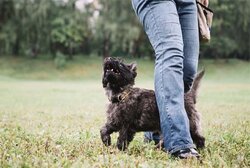
DogDance
DogDance is all about fun and creativity
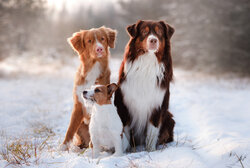
Paw care for dogs
Protect your dog’s paws during the cold season
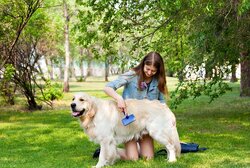
Moulting in dogs
How to help your dog during moulting

Fever in dogs
What to do if your dog has a high temperature and feels poorly?


